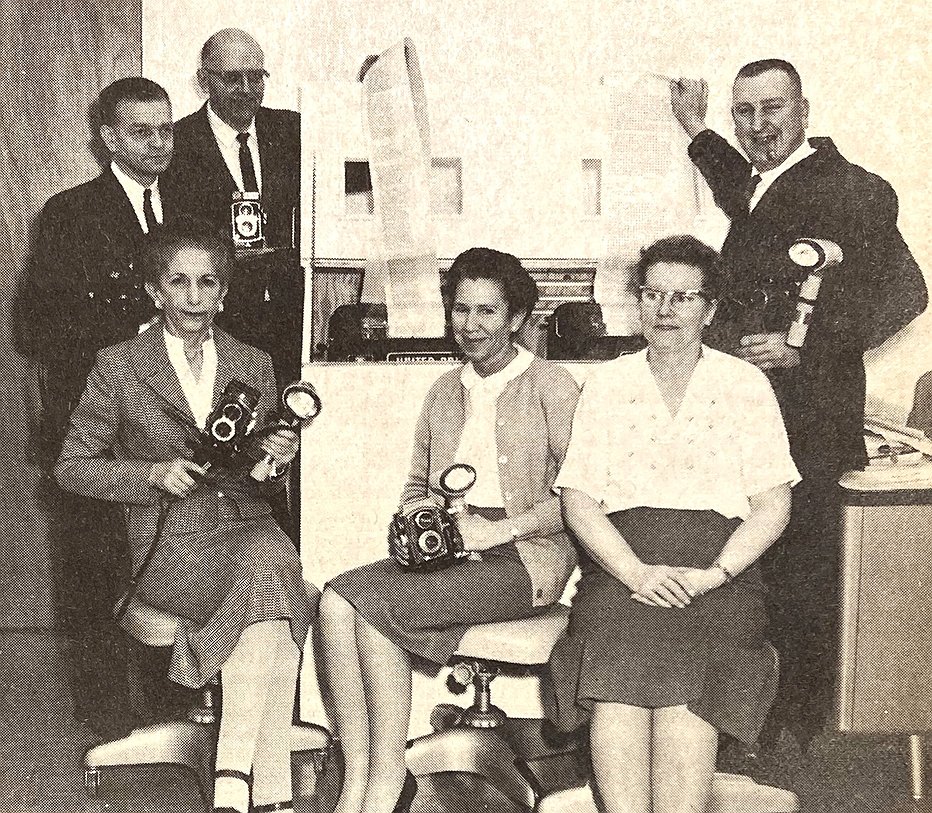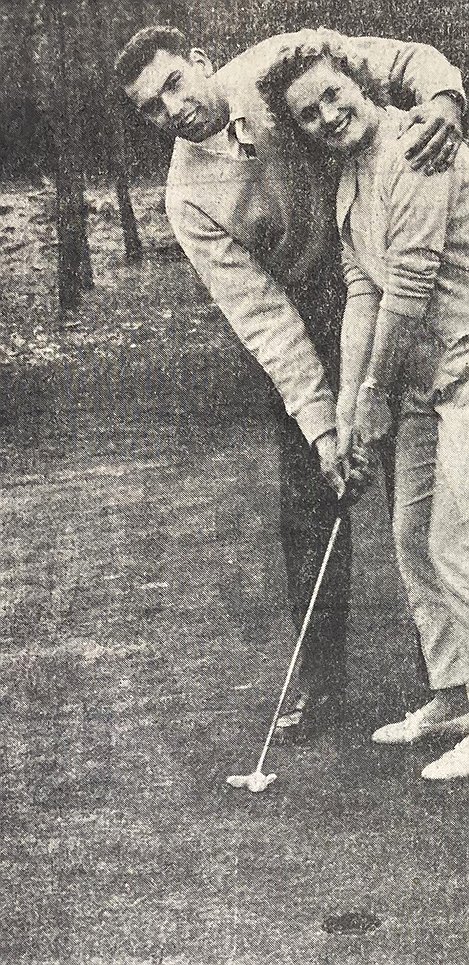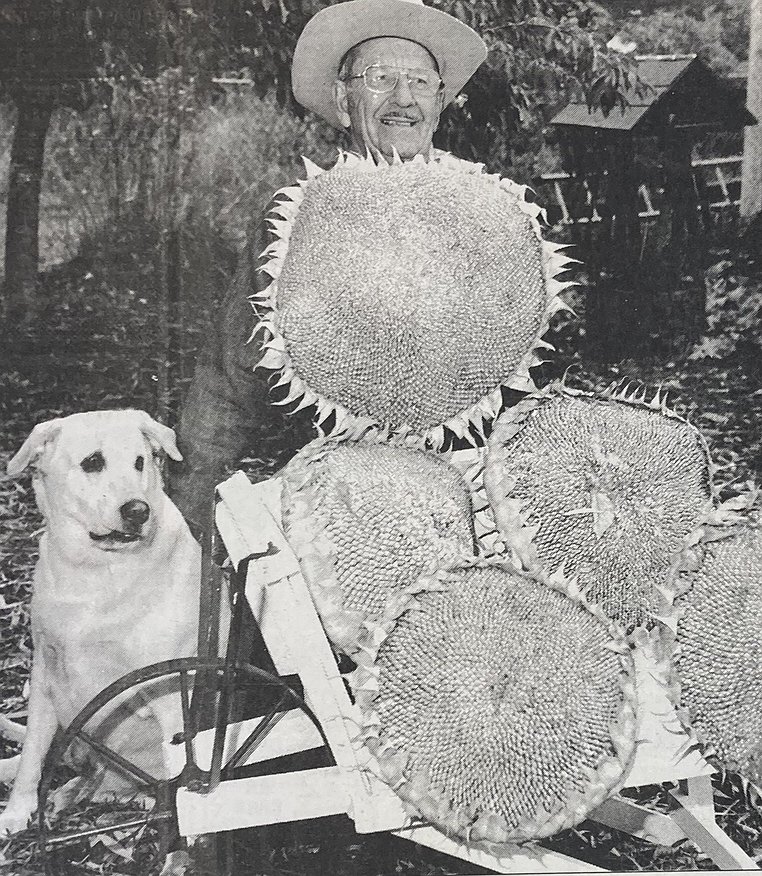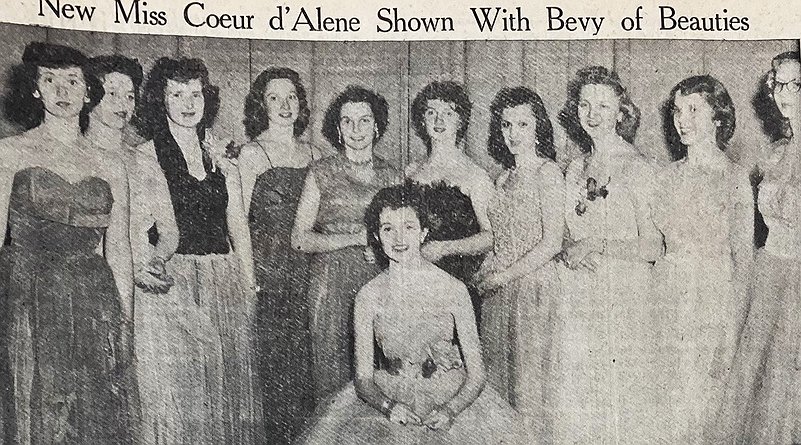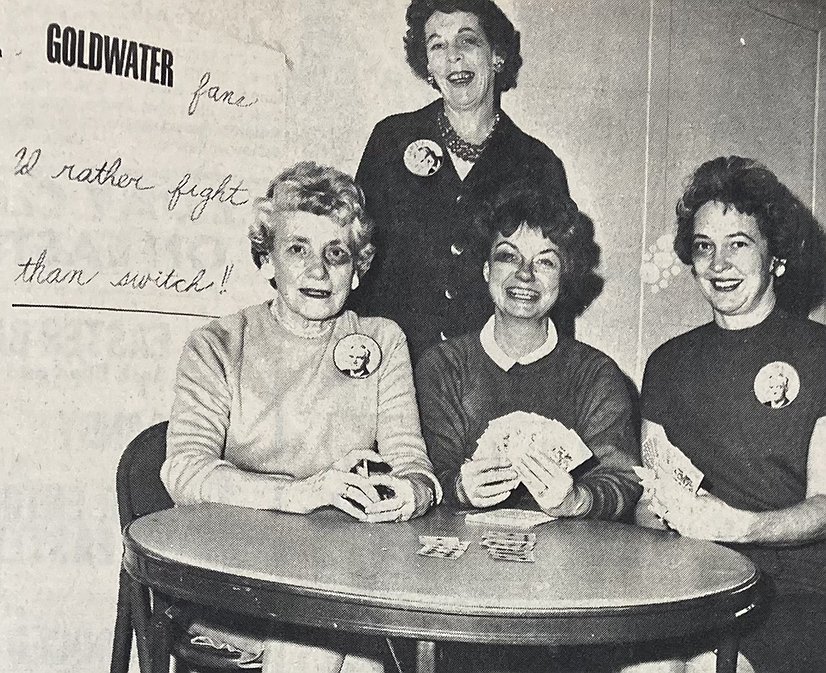Huckleberries: She shattered glass ceilings with her typewriter
Frances Cope wrote reams of copy during her 44 years as a Coeur d’Alene Press reporter, columnist and editor.
But one story stood out from the rest.
In the early 1950s, on a cold March night, she was called to a fatal train wreck at Granite near the Bonner County line. The train was halfway in the river. And two trainmen were dead.
“I’ve never been so cold in my life as I was that night,” she told the Coeur d’Alene Press for a profile story March 6, 1979. “I’d take my gloves off, and my hands were so cold I couldn’t even find the plunger on the camera.”
However, the Press said, “in the spirit of a true reporter, she stayed on the scene until 4 a.m. — just about in time to report to work and put out Saturday’s edition of the paper.”
Frances had retired nine years before the interview and was enjoying evenings with her husband, Cliff Johnson, uninterrupted “by fire sirens and police calls.” Frances and Cliff, a former law enforcement officer, had married in 1970, five days after Frances “turned in her typewriter.”
Frances was a reporter’s reporter, in a profession dominated by men, who crashed through glass ceilings decades before 1978, when the term was coined.
She was the first woman to enroll at Gonzaga University, studying journalism and advertising in night school. She introduced photography to the gray pages of The Press. And she was named editor in 1963 when The Press converted to offset printing to enhance its pages and photos.
Frances didn’t intend to become a newswoman, let alone a trailblazing one. She thought she would wind up in a “steno pool” because she enjoyed business classes and typing — and few newsrooms were open to women in 1926 when she “fell into” a proofreading job.
Three years later, she was promoted to reporter on a three-member staff and spent the next 34 years as a society editor, police reporter, and city editor before her promotion to editor. On occasion, she would publish the paper by herself when The Press was between editors.
She said her gender didn’t hurt her during her early years with the paper: “If anything,” she said, “I think I was treated a little better for it.”
She was known for her columns about the area’s pioneer families.
According to The Press, Frances was born in 1906, about 9 miles downstream from Sandpoint in a place that no longer exists: Wrenco. Her family moved from there to Spirit Lake in 1907, when the town was first starting up, and then on to Coeur d’Alene in 1910, where her father owned and operated Cope Plumbing and Heating, and later, Cope’s Electric.
In retirement, Frances had only a minor complaint about the paper: “I don’t know anybody they write about anymore.”
Other than that, she said, “I enjoy it very much.”
All for love
It has been 65 years since a British ballerina left a promising career on the London stage to follow her heart to Coeur d’Alene and play golf.
Valleda Ingram Woodhall, then 24, was learning the game from her husband, Coeur d’Alene Golf Course pro John Woodhall, when The Press interviewed the couple in April 1959.
Their story was perfect for an old Hollywood movie.
In 1957, the ballerina saw John practice golf near her home in Worthington, England. And fell in love. But there soon was an ocean between them as John moved to the United States to pursue a career as a golfer.
And he made money. And he landed a job as a golf pro in California. And the couple got engaged.
On March 2, 1959, Valleda flew to California to marry John 11 days later — on Friday the 13th, a day they considered lucky. The couple moved to Coeur d’Alene about a week later.
John told The Press that Valleda’s golf game was progressing nicely. And she was learning to drive a car, too. As a Press reporter watched at the entrance to the golf course clubhouse, she practiced starting, stopping, spinning circles and backing up in the couple’s small English car.
Valleda stopped her practice drive to tell The Press that she planned to teach ballet in her new town: “I have no intention of giving up my career altogether. Dancing is too much a part of me.”
Guinness worthy
In real estate, the secret to success is simple: Location, location, location. And it so happens that the secret to growing giant sunflowers is the same.
In summer 1982, Stanley Hill gardener John Ruthven grew the largest sunflower the world had seen, as far as the Guinness Book of World Records was concerned.
John did his part by growing a 22-inch sunflower. The Press published a photo of it. A friend sent the clipping to Guinness. And, voila, about two years later, Guinness recognized his record sunflower.
John told The Press that he’d planted the sunflower on the south side of a metal building next to a partly buried row of bricks. The building and the bricks conserved heat and moisture. He also fed the plant fish fertilizer.
In 1984, determined to best his own sunflower record, John started by planting the seeds indoors.
Huckleberries
• Poet’s Corner: You cheerful sprout of green and blue,/I’m charmed and pleased at meeting you;/amid these chilling rains that soak us/I now proclaim you “Spring’s First Crocus” — The Bard of Sherman Avenue (“An Award Winner”).
• In Memoriam: The woman for whom the most famous restaurant in town is named died at age 71 on April 6, 1984: Beverly Hagadone. In May 1986, when the upgraded Coeur d’Alene Resort reopened, Duane Hagadone honored his mother by naming his fine-dining space Beverly’s. The daughter of former mayor Foxy Edmonds married Burl Hagadone in 1931.
• She Was No. 1: Miss Coeur d’Alenes came and went in the olden days when Coeur d’Alene cherished such royalty. But only one — Marilyn Stewart, then 18 and a Coeur d’Alene High senior — held the honor of being the first Miss Coeur d’Alene. On April 2, 1954, she bested 11 others for the title. Alas, the weather didn’t cooperate. Marilyn’s parade was rained on — the evening one planned for her downtown along with a show of the latest-model cars.
• Political Fun: In 1964, staffers at local HQ for GOP underdog Barry Goldwater said they’d rather fight than switch presidential candidates. And they walked the talk by painting black eyes on themselves, including Mrs. Carter Crimp (former mayor Sandi Bloem’s mother). The office offered visitors coffee, bridge and all the Goldwater material they could carry.
Parting shot
The greatest example of love, according to the Scriptures, is to lay down one’s life for a friend. Twenty years ago, Paul Burke, then the ad director for Hagadone Newspapers, risked his life for a friend, Kim Beagley. She desperately needed a new kidney, and he had an extra one. People tried to talk him out of the donation. And he admitted to being scared. But, according to a Press article from April 4, 2004, Paul never wavered in his resolve to help Kim and her family. After the operation at Sacred Heart Medical Center, Paul, now 74, said he felt like he’d been hit by a Mack truck. Today, he’s retired, active, and living in Hawaii. Kim, now 61, is healthy, too. She posted this comment on Paul’s Facebook page March 31: “Thank you for the Gift of Life; donating your kidney to me has changed my life. It is so hard to believe that it (was) 20 years ago. This kidney still amazes my doctors; it is so strong!” Now, go be a blessing to others today.
• • •
D.F. (Dave) Oliveria can be contacted at dfo@cdapress.com.










